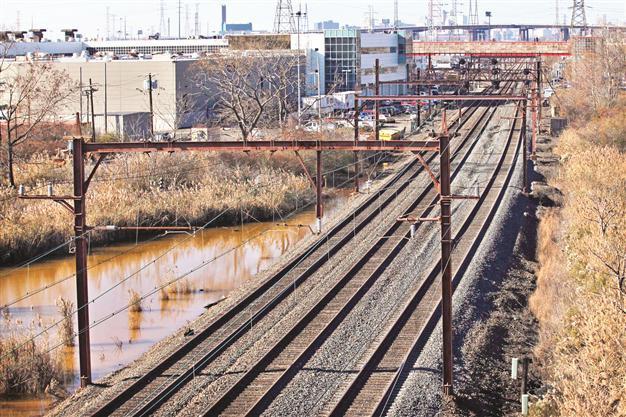Pre-storm decision increased damage
NEW YORK - Reuters

A general view of the rail at the entrance of a New Jersey Transit complex is seen above. The company is trying to wipe off the effects of the Sandy storm. REUTERS photo
New Jersey Transit’s struggle to recover from Superstorm Sandy is being compounded by a pre-storm decision to park much of its equipment in two rail yards that forecasters predicted would flood, a move that resulted in damage to one-third of its locomotives and a quarter of its passenger cars.That damage is likely to cost tens of millions of dollars and take many months to repair, a Reuters examination has found.
The Garden State’s commuter railway parked critical equipment - including much of its newest and most expensive stock - at its low-lying main rail yard in Kearny just before the hurricane. It did so even though forecasters had released maps showing the wetland-surrounded area likely would be under water when Sandy’s expected record storm surge hit. Other equipment was parked at its Hoboken terminal and rail yard, where flooding also was predicted and which has flooded before.
Among the damaged equipment: nine dual-powered locomotive engines and 84 multi-level rail cars purchased over the past six years at a cost of about $385 million.
‘Basic railroading’
“It’s just basic railroading. You don’t leave your equipment where it can be damaged,” David Schanoes, a railroad consultant and former deputy chief of field operations for Metro North Railroad, a sister railway serving New York State.
After Reuters made numerous inquiries to state and local officials this week about the decision to store equipment in the yards, an unidentified senior transportation official told the New York Post that NJ Transit had launched an internal probe, the Post reported on Nov. 17.
















